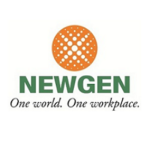When properly configured and understood, SharePoint can be an extremely valuable company portal for all manner of office-related functions, including document management, file sharing with versioning, forms, workflows, etc. The platform is also capable of custom applications with database connectors.
Currently, it is used as the default website for Intranet. Sites are available for each department. News and announcements are available on the main page, as well as the company directory. A custom HR portal has also been developed to be the method for onboarding and offboarding employees.
It is not very intuitive to most users. It can be customized, but it requires a SME with a great deal of experience and training.
I would like to see Microsoft build better site templates to help kick start those new to the SharePoint environment. Better documentation, training, and tutorials would also help as well.
I have been using SharePoint for over ten years.
We have not encountered any stability issues.
We have not encountered any scalability issues.
Technical support is average.
I’ve not used any other tools.
It’s now available as a part of Office 365, but a local, on-premises install has some advantages if keeping everything inside your Intranet is important.
Find out how others are using it. Examine good examples of custom applications and workflows. Consider using commercial add-ons as well.
When properly implemented and users are adequately trained, SharePoint can take the place of network file shares for most types of use cases. Instead of users never knowing where to find documents, or which document is the current version, SharePoint makes it easy to share documents and set permissions. A classic workflow that SharePoint handles easily is the review and edit of a document by multiple individuals. By using a workflow, each person that needs to review and edit one or more documents is notified by email, can edit the document (and depending on your release and configuration, multiple users can edit at the same time), and mark their workflow task as done. There is none of the confusion of emailing a group of people a copy of a document, getting all their edits back with a different copy for each person. With workflows, each person edits the same document and the initiator of the workflow knows when each person completes their review/edit. Later releases of SharePoint extend this functionality to the cloud, adding file synchronization for mobile devices.
Out of the box, SharePoint is not known for intuitiveness, and administrators and users alike tend to have a difficult time creating effective and usable sites. However, with some time and effort, and good training, it can be a very valuable tool and centralized location for a company or department. One very useful type of SharePoint site that can be created is a “Meeting Space”, where regular/recurring meetings are held. Agendas for each meeting can be setup, along with tasks assigned to each member, as well as a document library for documents related to each meeting. Project management sites are another useful tool for managing collaborations and project tracking, with optional integration with Microsoft Project.














